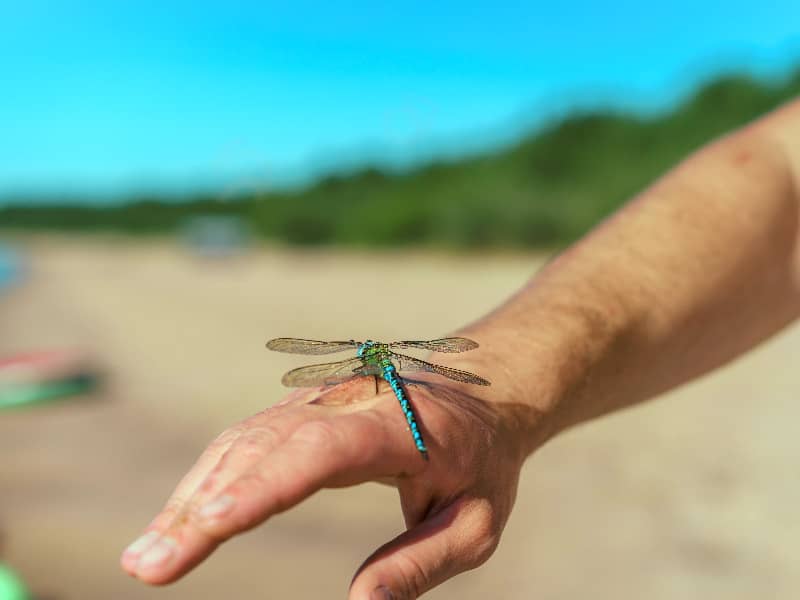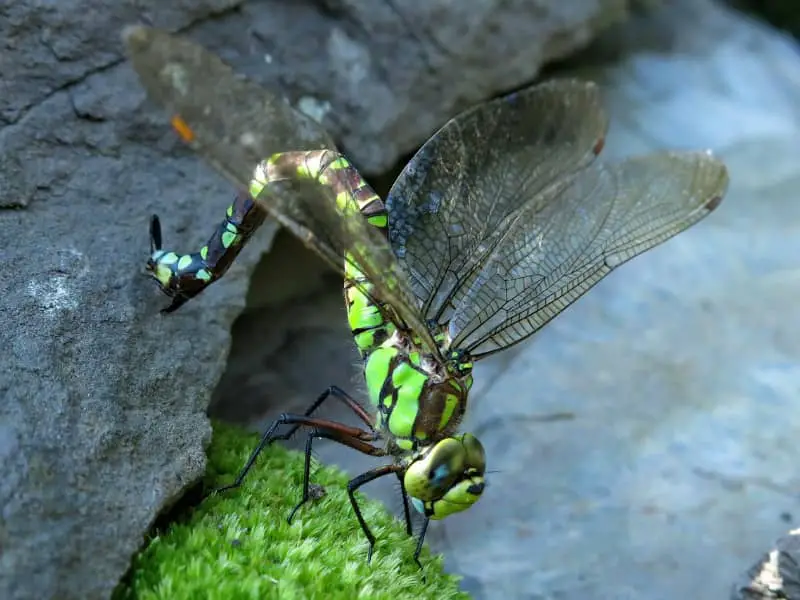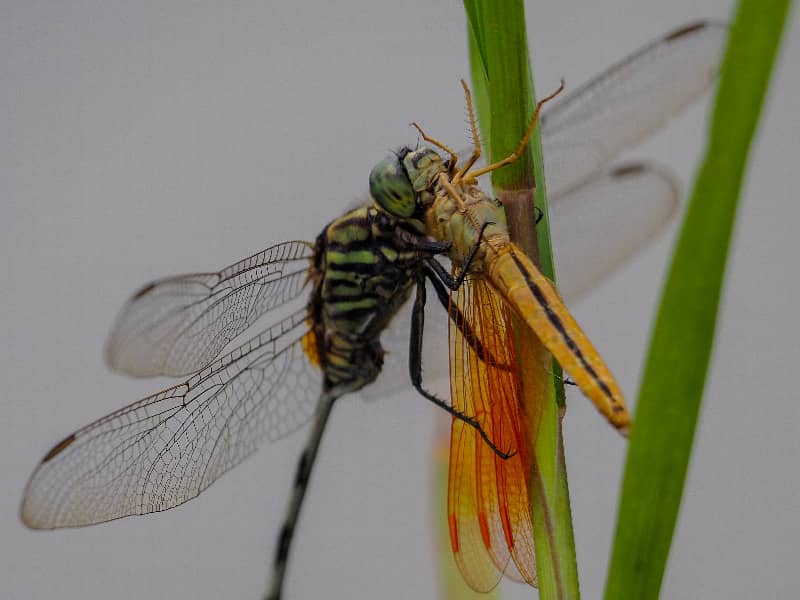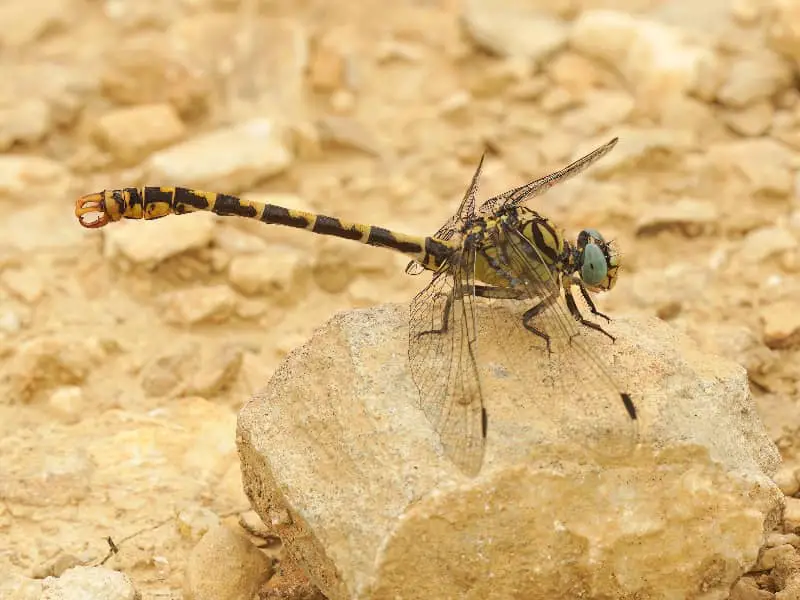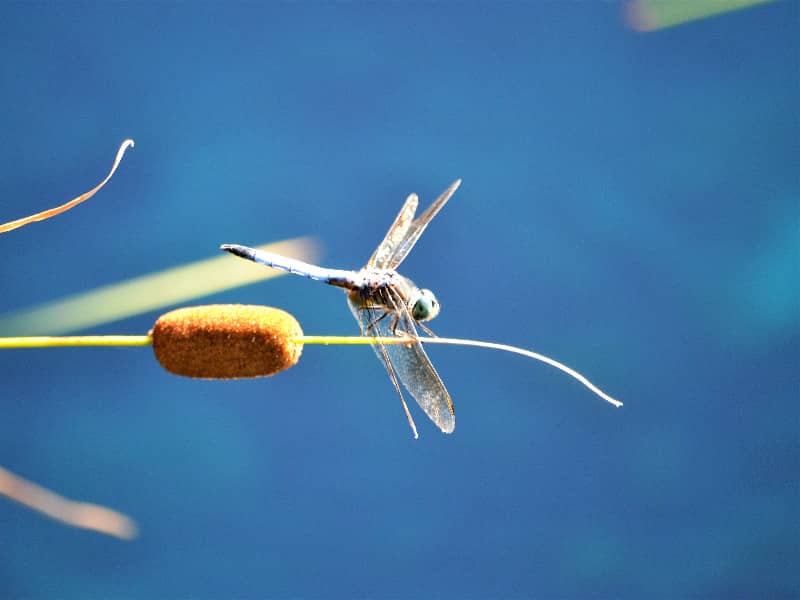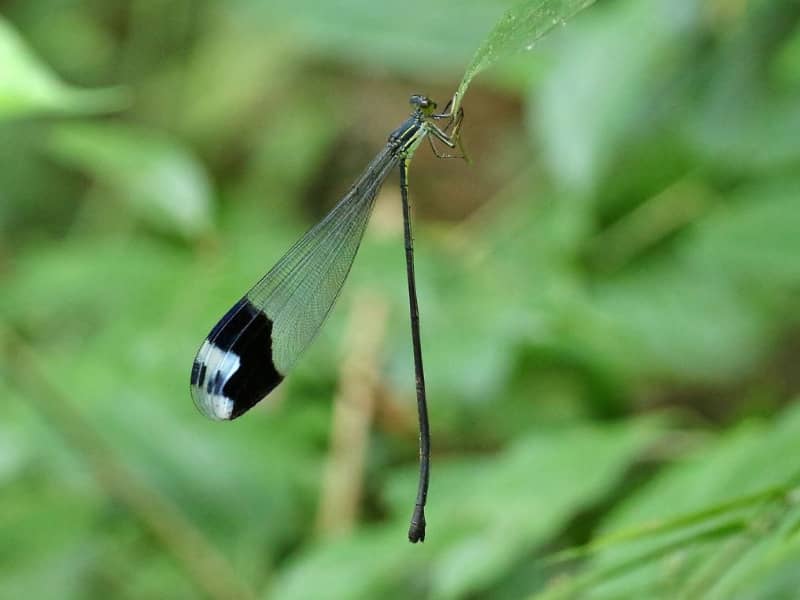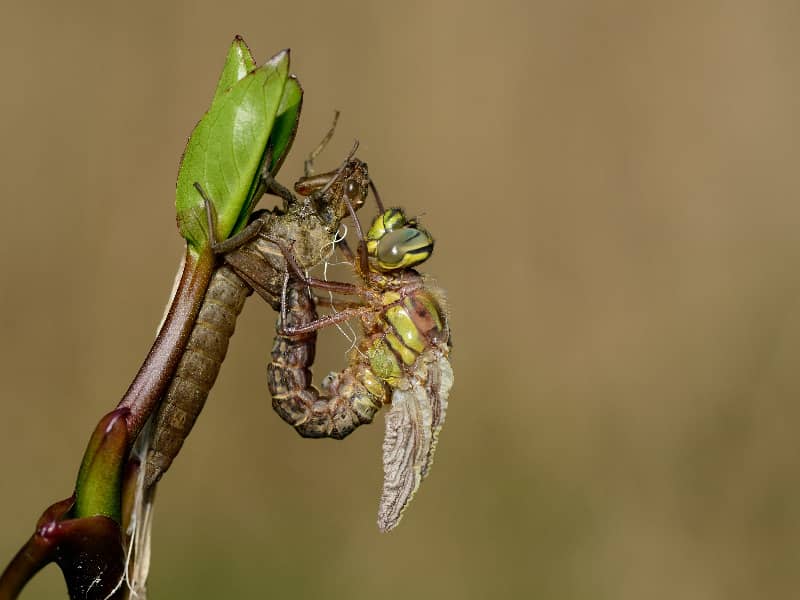
Dragonfly larvae
Dragonflies are fascinating insects known for their graceful flights and bright colors. But before they become the elegant fliers, they go through a remarkable metamorphosis. In this article, we will focus on dragonfly larvae. An often overlooked stage in the dragonfly life cycle. Let's dive into the world of hidden wonders of dragonfly larvae and discover their aquatic habitat.
- Dragonfly larvae
- The life cycle of a dragonfly
- The unique properties of dragonfly larvae
- The habitat of dragonfly larvae
- Adaptations of dragonfly larvae to their aquatic habitat.
- Feeding habits and enemies of dragonfly larvae
- The role of dragonfly larvae in the ecosystem
- Interesting facts about dragonfly larvae
- Conclusion: Dragonfly larvae
- FAQ
The life cycle of a dragonfly
The life cycle of a dragonfly consists of four main stages: Egg, larva, pupa and adult dragonfly. The dragonfly larva is the second phase of this cycle and plays a crucial role in the dragonfly's development. After the eggs are laid by a female dragonfly in water bodies, the larvae hatch from the eggs and begin their life underwater.
The unique properties of dragonfly larvae
Dragonfly larvae are amazing creatures that are very different from adult dragonflies. With their long, snake-like bodies and powerful jaws, they are perfectly adapted to life underwater. Their bodies are covered with hairs that help them absorb oxygen from the water. In addition, their eyes are large and conspicuous, which gives them excellent underwater vision.
Dragonfly larvae also have a special ability to move. They use their long abdomens to move through the water and can even make quick swims to catch prey or protect themselves from danger. Their abdominal appendages also serve as anchors to hold onto plants or other surfaces.
The habitat of dragonfly larvae
Dragonfly larvae live in a variety of water bodies, including ponds, lakes, rivers, and marshes. They prefer stagnant or slow-moving waters, as these provide an abundant food source. The larvae often hide in underwater plants or in mud and roots where they are protected from predators.
Adaptations of dragonfly larvae to their aquatic habitat.
Dragonfly larvae have developed amazing adaptations to survive in their aquatic habitat. One remarkable adaptation is their respiratory system. They have special gills that allow them to extract oxygen from the water. These gills are covered with many fine filaments that provide a large surface area to efficiently absorb oxygen.
Another adaptation is their digestive system. Dragonfly larvae are predatory insects and feed on small aquatic insects, larvae and even small fish. Their digestive system is designed to efficiently digest these prey and absorb nutrients necessary for their growth and development.
Feeding habits and enemies of dragonfly larvae
Dragonfly larvae are skilled hunters and feed on a variety of prey. They are known to eat small fish, crustaceans, insect larvae and worms. Their powerful jaws enable them to grasp and crush their prey.
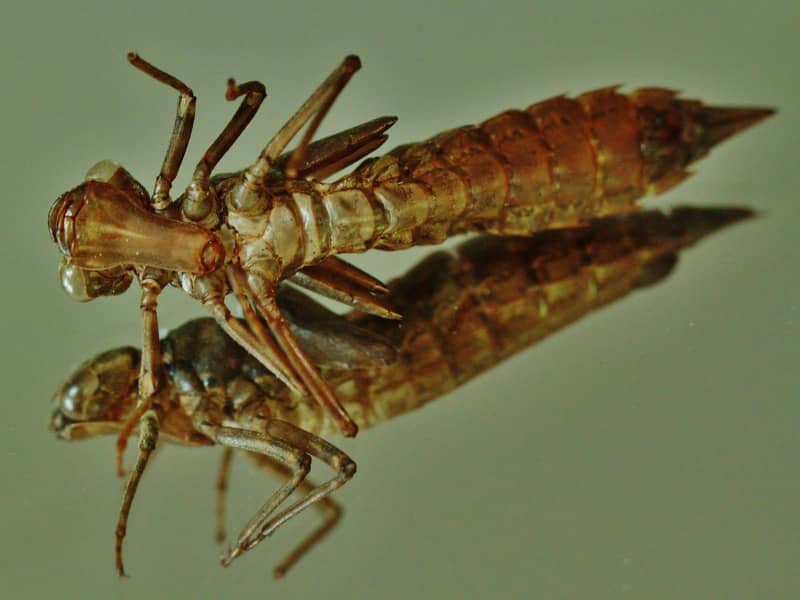
Although dragonfly larvae are predators, they also have natural enemies. The most common enemies include fish, birds, frogs, and water scorpions. These predators have developed various strategies to catch and eat the dragonfly larvae. Fish, for example, can capture the larvae with a quick bite, while birds snatch them out of the water with their pointed beaks.
The role of dragonfly larvae in the ecosystem
Dragonfly larvae play an important role in the aquatic ecosystem. As predators, they regulate populations of other aquatic insects and maintain balance in the ecosystem. By controlling populations of mosquito larvae and other harmful insects, dragonfly larvae help reduce diseases that can be transmitted by these insects.
Likewise, dragonfly larvae also serve as food for other animals in the water body. They are an important food source for fish, birds and other predators. By being prey themselves, dragonfly larvae help maintain the food web and preserve biodiversity in the water body.
Interesting facts about dragonfly larvae
- Dragonfly larvae can live underwater for up to several years before pupating and becoming adult dragonflies.
- Some dragonfly larvae species are able to burrow through tubes in the mud to hide from predators.
- The color of dragonfly larvae can vary depending on their habitat. Some are brown or green to better camouflage themselves in their environment.
- Dragonfly larvae are very resistant to environmental conditions and can survive even in polluted waters.
Conclusion: Dragonfly larvae
The dragonfly larva is a fascinating creature that is often overlooked. Their unique characteristics and adaptations make them an important player in the aquatic ecosystem. From their hunting techniques to their role as food for other animals. Dragonfly larvae play a critical role in maintaining balance in the aquatic environment. Dragonfly larvae
FAQ
Question: How long does it take for a dragonfly larva to grow into an adult dragonfly?
Response: The duration of a dragonfly's development cycle depends on the species and environmental conditions. However, it usually takes several months to several years for a dragonfly larva to fully mature and pupate.
Question: Can dragonfly larvae fly?
Response: No, dragonfly larvae cannot fly. They spend most of their lives underwater and only develop wings after pupation to rise into the air and fly as adult dragonflies.
Question: How big can dragonfly larvae grow?
Response: The size of dragonfly larvae varies depending on the species. Some species can grow to only a few millimeters in length, while others can reach up to several centimeters. The largest dragonfly larvae species can reach a length of over 10 centimeters.
If you want to learn more about the fascinating world of dragonflies, check out our other articles about dragonflies and discover the beauty and importance of these amazing insects!
Author
Last posts
- 15. March 2024ChickensRobuster Kunststoffzaun für Hühner – Tipps
- 13 October 2023DragonfliesBlue feather damselfly
- 12 October 2023DragonfliesYellow dragonfly - What are the species?
- 12 October 2023DragonfliesEarly Adonis Damselfly

